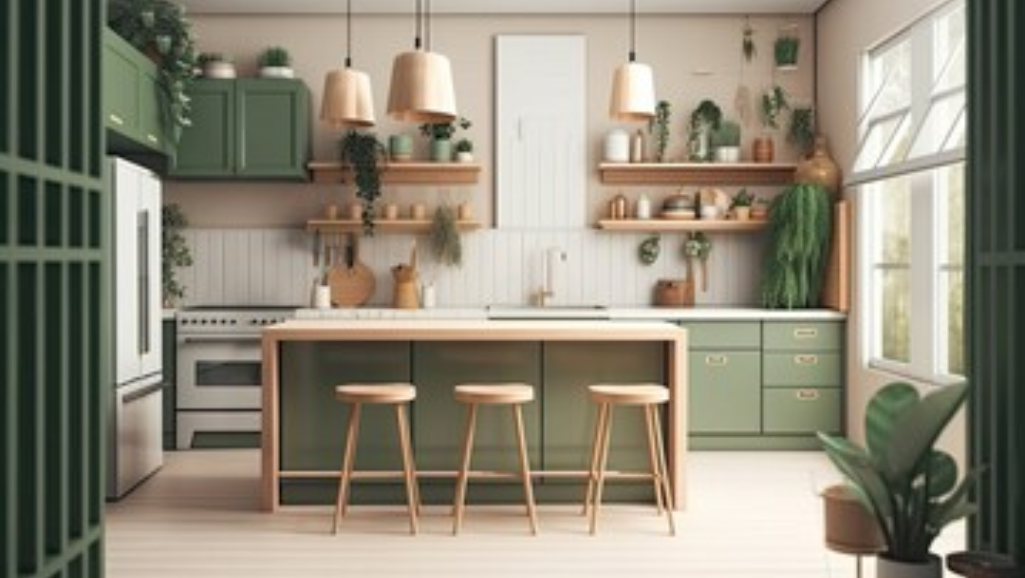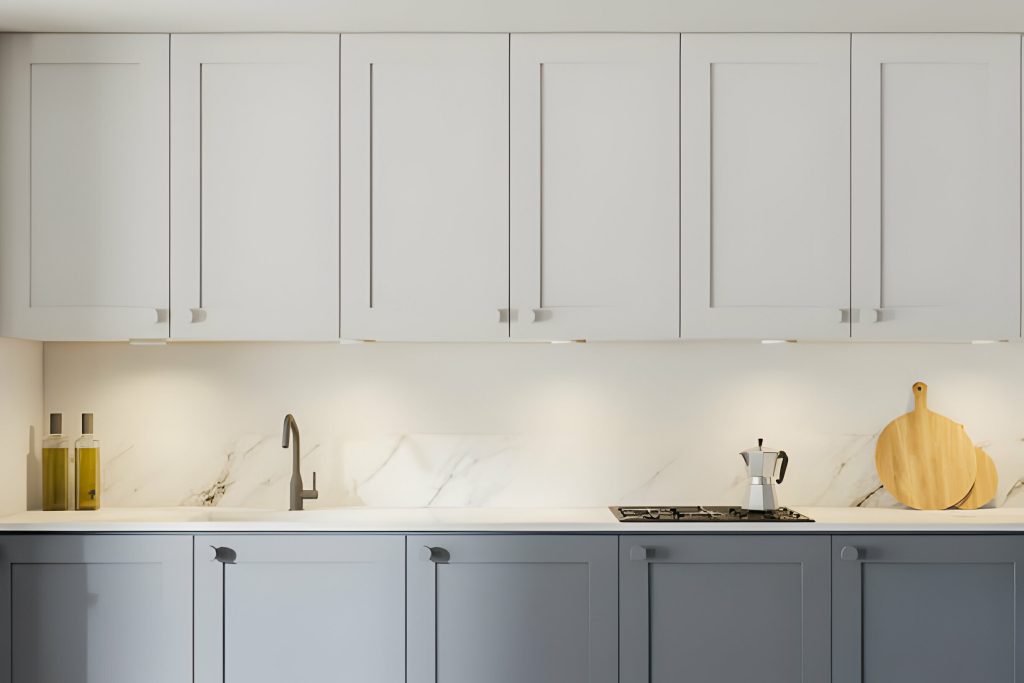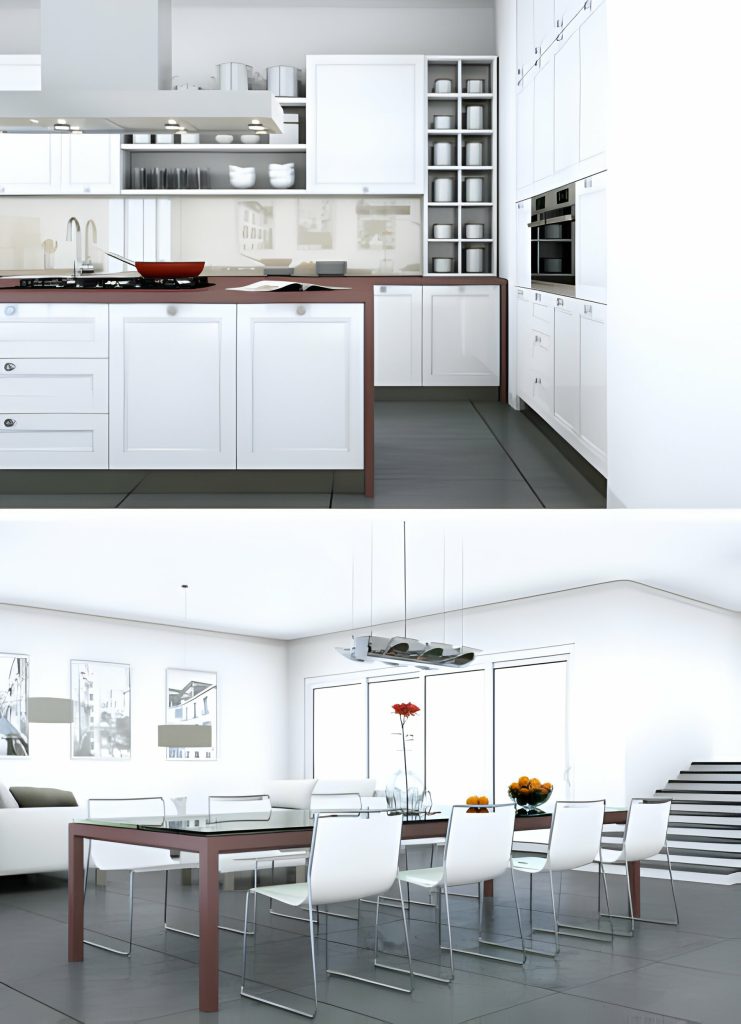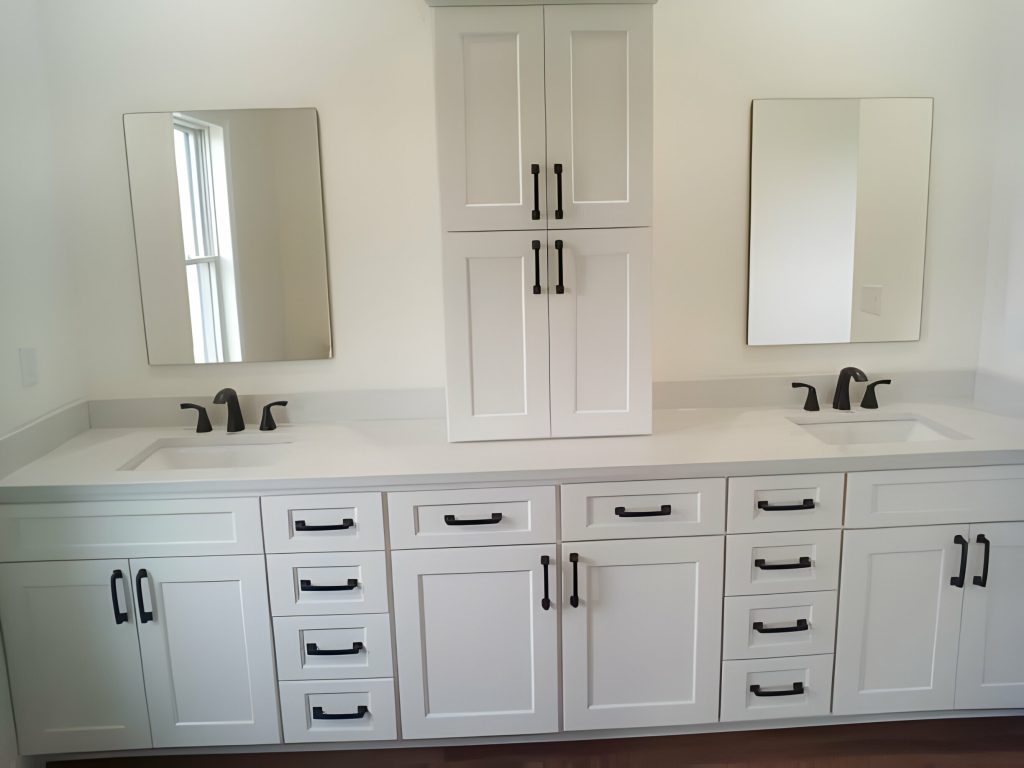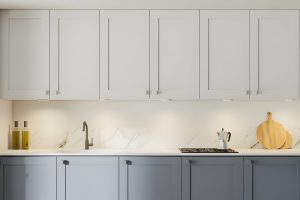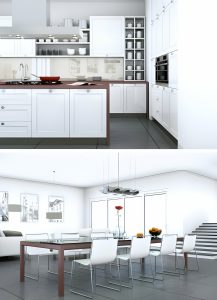Having trouble with your kitchen cabinet doors that just won’t close? Don’t worry, we’ve got you covered! In this guide, we’ll show you step-by-step how to adjust those stubborn doors and get them working properly again. From assessing the problem to checking for loose screws, aligning the doors, and lubricating the hinges, we’ll walk you through the entire process. Say goodbye to those frustrating cabinet doors and hello to smooth, functional operation!
Assess the Problem
To assess the problem with your kitchen cabinet doors that won’t close, examine the alignment and hinges for any visible issues. Misalignment is a common cause of this problem, and it can occur due to various reasons such as improper installation, worn-out hinges, or the settling of the cabinet. Follow these steps to accurately assess kitchen cabinet door alignment issues:
- Begin by inspecting the alignment of the doors. Stand directly in front of the cabinet and observe if the doors are level and parallel to each other. Look for any gaps or overlaps between the doors and the cabinet frame.
- Check the hinges for any visible issues. Make sure they are securely attached to the cabinet and the door. Look for loose screws, broken hinges, or signs of wear and tear. If you notice any damage, consider replacing the hinges.
- Test the movement of the doors. Open and close them to see if they bind or rub against the cabinet frame. Pay attention to any sticking or resistance while operating the doors.
Check for Loose Screws
Check for any loose screws on the hinges of your kitchen cabinet doors. Loose screws can cause your cabinet doors to become misaligned and not close properly. Follow these steps to check for and fix any loose screws:
- Inspect the hinges: Carefully examine each hinge on your cabinet doors. Look for any screws that appear to be loose or protruding.
- Tighten the screws: Use a screwdriver to tighten any loose screws you find. Turn the screwdriver clockwise to tighten the screws until they are snug. Avoid over-tightening, as this can strip the screw or damage the hinge.
- Test the door alignment: Once you have tightened all the screws, close the cabinet door and observe its alignment. If the door still does not close properly, there may be additional issues causing the problem, such as a warped door or damaged hinge. In such cases, you may need to consult a professional or consider replacing the hinge.
Adjust the Hinges
To properly adjust your kitchen cabinet doors that won’t close, you can start by making adjustments to the hinges. Proper hinge installation is crucial for the smooth functioning of cabinet doors. If the hinges are not installed correctly, it can lead to various issues causing the doors to not close properly.
Common issues with cabinet door hinges include misalignment, loose screws, or worn-out hinges. To adjust the hinges, follow these step-by-step instructions:
- Start by inspecting the hinges for any loose screws. Tighten them using a screwdriver if necessary.
- If the hinges are misaligned, loosen the screws holding the hinge to the cabinet frame. Gently tap the hinge with a hammer to adjust its position.
- Check if the door is level by using a carpenter’s level. If the door is not level, adjust the hinge vertically by loosening the screws and moving the hinge up or down.
- If the cabinet door is rubbing against the frame, adjust the hinge horizontally by loosening the screws and moving the hinge left or right.
- Test the door after each adjustment to ensure it closes properly. Make further adjustments if needed.
Align the Cabinet Doors
To align your cabinet doors, start by tightening the hinge screws with a screwdriver to ensure they are secure. Then, adjust the height of the doors by loosening the screws on the hinge plates and moving them up or down as needed. If the doors still don’t align properly, you can use shims to fill any gaps and create a more even appearance.
Tighten Hinge Screws
To align the cabinet doors, start by tightening the hinge screws using a screwdriver. Here are three steps to help you tighten the hinge screws and achieve proper door alignment:
- Identify the loose hinge screws: Inspect each hinge on the cabinet doors to find any loose screws. A loose screw can cause misalignment and prevent the door from closing properly.
- Tighten the screws: Use a screwdriver to tighten the loose screws. Start with a gentle turn and gradually increase the pressure until the screws are securely fastened. Be careful not to overtighten, as this could strip the screw holes or damage the hinges.
- Test the door alignment: Once all the screws are tightened, open and close the cabinet doors to check if they align properly. If the doors still don’t close correctly, you may need to adjust the hinges or consider replacing them.
Adjust Door Height
Now, let’s move on to aligning the cabinet doors by adjusting their height. Door height adjustments are necessary when the cabinet doors are misaligned and won’t close properly. There are several common reasons for misaligned cabinet doors, such as settling of the house, changes in temperature and humidity, or improper installation. To fix this issue, follow these simple steps:
- Locate the hinges on the cabinet door. There are usually two or three hinges, depending on the size and weight of the door.
- Use a screwdriver to loosen the screws on the hinges. This will allow you to adjust the height of the door.
- Gently lift or lower the door to the desired height. Be sure to keep it level with the other doors.
- Once the door is at the correct height, tighten the screws on the hinges to secure it in place.
- Test the door by opening and closing it to ensure it aligns properly with the other doors.
Use Shims if Necessary
If your cabinet doors are still misaligned after adjusting their height, you may need to use shims to align them properly. Shims are thin pieces of material that can be inserted between the cabinet and the hinge to adjust the position of the door. Here’s how to do it:
- Gather the necessary materials: You will need shims, a screwdriver, and a level.
- Identify the problem area: Determine which part of the door is misaligned and causing it not to close properly.
- Proper shim placement: Insert the shim between the cabinet and the hinge at the problem area. Start with a thin shim and gradually add thicker ones until the door is properly aligned.
If using shims doesn’t solve the issue, there are alternative solutions to fixing misaligned cabinet doors. These include adjusting the hinge screws, replacing worn-out hinges, or even sanding down the door to create a better fit.
Lubricate the Hinges
Apply lubricant to the hinges of your kitchen cabinet doors to ensure smooth and silent operation. Regular maintenance of your cabinet hinges is important to prevent them from becoming stiff or squeaky. There are different types of lubricants that you can use to keep your hinges in top condition.
First, identify the type of hinge you have. Some hinges have built-in lubrication, while others may require external lubrication. If your hinges have built-in lubrication, simply clean them with a soft cloth and remove any debris or dirt that may have accumulated.
For hinges that require external lubrication, you have several options. Silicone-based lubricants are a popular choice as they are long-lasting and provide excellent lubrication. Apply a small amount of silicone lubricant to the hinge pin and move the door back and forth to distribute the lubricant evenly.
Alternatively, you can use graphite lubricant, which is specifically designed for metal-to-metal contact. Apply a small amount to the hinge, focusing on the areas where the hinge moves. Graphite lubricant will penetrate the hinge and provide a smooth and frictionless operation.
Remember to wipe away any excess lubricant to avoid attracting dust and debris. By regularly lubricating your cabinet hinges, you can ensure that your doors open and close smoothly and quietly for years to come.
Test and Adjust the Closing Mechanism
To test and adjust the closing mechanism of your kitchen cabinet doors, there are three key points to focus on. First, check for any loose hinges and tighten them using a screwdriver, ensuring that the door is securely attached to the cabinet. Next, evaluate the alignment of the door by opening and closing it multiple times, making note of any areas where it doesn’t close properly. Finally, inspect the hardware, such as the hinges or the door catch, and replace any faulty components that may be preventing the door from closing correctly.
Tighten Loose Hinges
You can easily tighten loose hinges and adjust the closing mechanism of your kitchen cabinet doors. Here’s how to do it:
- Identify the loose hinges: Inspect your cabinet doors and look for any hinges that appear loose or wobbly. These hinges are the ones that need to be tightened.
- Tighten the screws: Using a screwdriver, carefully tighten the screws on the loose hinges. Start by tightening them just enough to secure the hinge but avoid overtightening, as this can cause the wood to split.
- Test and adjust the closing mechanism: Close the cabinet door and observe how it aligns with the cabinet frame. If the door is still misaligned or doesn’t close properly, you may need to adjust the closing mechanism. This can usually be done by turning a screw located on the hinge itself. Experiment with different adjustments until the door aligns properly and closes smoothly.
Adjust Door Alignment
To adjust the door alignment and test the closing mechanism, start by observing how the cabinet door aligns with the frame when it is closed. Common door alignment issues include doors that are misaligned horizontally or vertically, doors that sag or stick, and doors that don’t close properly. Adjusting the door alignment can help resolve these issues and ensure that the cabinet doors close smoothly.
To test the closing mechanism, open and close the door several times to determine if it closes properly. If the door doesn’t close smoothly or align properly with the frame, you will need to make adjustments.
| Tools Needed | Description |
|---|---|
| Screwdriver | Used to adjust the hinges and screws |
| Level | Helps ensure the door is aligned correctly |
| Shims | Used to adjust the door vertically or horizontally |
| Drill | May be needed to make new screw holes |
In the next section, we will discuss how to adjust the door alignment and test the closing mechanism in a step-by-step manner.
Replace Faulty Hardware
To properly test and adjust the closing mechanism of your kitchen cabinet doors, it is essential to replace any faulty hardware. Here are the steps to replace the hardware:
- Identify the faulty hardware: Inspect the cabinet doors and hinges to determine which hardware needs to be replaced. Look for signs of wear and tear, loose screws, or broken components.
- Purchase new hardware: Visit a home improvement store or order online to find replacement hinges, screws, or other necessary parts. Make sure to measure the size and type of hardware needed to ensure a proper fit.
- Install new hardware: Remove the old hardware by unscrewing the screws and carefully detach the hinges or other components. Align the new hardware and secure it with screws, using a screwdriver or drill.
